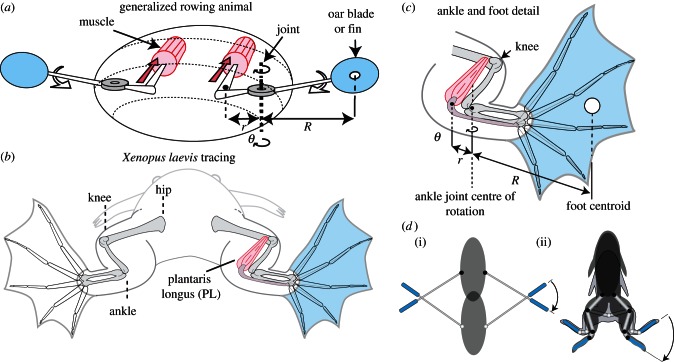Figure 2.
Anatomy of a hypothetical animal rower (a) showing a pair of rowing appendages that rotate about an angle (θ) driven by muscles contracting against an inlever (r). Propulsive drag arises at the end of the outlever (R). A tracing of Xenopus laevis (b) shows the PL muscle as the main motor for swimming. A sketch of the lower limb (c) shows how r and R are defined with respect to the ankle joint. Schematic diagrams (d) of a notonectid insect (i) and a frog (ii) illustrate how the oars rotate with respect to the water as the body moves forward.

